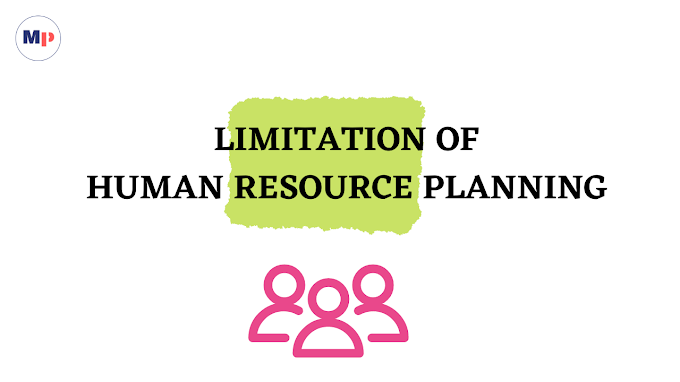MEANING AND DEFINITION OF HUMAN RESOURCE MANAGEMENT (HRM)
Personnel
Management was considered a staff function, i.e. keeping records of attendance
and productivity of workers and administration of wages. Later on,' welfare of
staff' and industrial relations' etc. were added to the functions of a
personnel department of an organization. Thus personnel management came to be
known as hiring, training, compensation and welfare of employees.
In modern times, Human Resource Management treats labour as social capital or
resource rather than a variable cost i.e. it is proactive rather than reactive
and it has now acquired a strategic focus. Now human resources or the people at
work are considered as a vital resource of any organization and their management,
as a process concerned basically with the management of people. Thus Human
ResourceManagement is the reincarnation of Personnel Management.
Some eminent academicians and professional managers have
defined human resource management as follows:
"Personnel Management is the planning, organizing, directing, controlling
of the procurement, development, compensation, integration and maintenance and
separation of human resources to the end that individual, organizational and
social objectives are accomplished."
Edwin B. Flippo,
"a series of
integrated decisions that form the employment relationship; their quality
contributes to the ability of the organisation and the employees to achieve
their objectives.
Milkovich and Boudreau,
"Personnel Management is that phase of management which deals with the
effective control, and use of manpower as distinguished from other sources of
power. The methods, tools and techniques designed and utilised securely the enthusiastic participation of labour to represent the subject matter for too
studying in Personnel Administration.
Dale Yoder,
"PersonnelManagement is that
part of management functions which is primarily concerned with human
relationships in an organisation, its objective is the maintenance of those
relations which enable all those engaged in the undertaking to make their maximum contribution to the effective working of that undertaking.
Indian Institute of Personnel Management, Calcutta,
On the basis
of the above definitions, it may be concluded that Human Resource Management, is that management which is related
to human resources of a part of an enterprise. The object of human Resource
Management is to recruit, develop and to retain the employees in the
organisation. It includes planning, organising, directing and controlling of
the performance of employees and workers in the organisation.
CHARACTERISTICS OF HUMAN RESOURCE MANAGEMENT
Following
are the important characteristics of Human Resource Management:
1. The part of General Management: Human Resource Management is a part
of General Management because Human Resource Management is the management of
workers and employees of an organisation and these workers and employees are a
part of the whole organisation.
2. Development of Human Resources: Human Resource Management is the
development of human resources working in an organisation. In this part of
management, efforts are made to provide the best education and training facilities
to the workers.
3. Harmonious Relations between Human and other Resources of the organization: Human Resource Management
establishes harmonious relations between human and other resources of an
organisation.It stresses upon the establishment of sweet relations between
labour and capital on one hand and between labour and management on the other.
4. Uses of Principles of General Management: Human Resource Management is based
upon the same principles that are used in General Management.
5. It deals with Labour Unions also: Human Resource Management deals with
labour unions also. Labour Unions help in preventing industrial disputes,
strikes, and lock-outs etc. These unions help in solving labour problems
also.
6. Departmental Responsibility: A very important characteristic of HumanResource
Management is that it has, a particular Departmental Responsibility. It
responsible only for matters related to employees.
OBJECTIVES OF HUMAN
RESOURCE MANAGEMENT
The main objective of Human Resource Management is to manage the
worker and employees of an industrial enterprise in the best possible manner.
In the process of Human Resource Management, the employees are recruited,
trained and developed so that they may contribute to achieving the objectives of
the enterprise.
Following are the important objectives of Human Resource Management in an
industrial enterprise:
1. To Establish harmonious relations between labour and capital: The
very first objective of Human Resource Management is to establish harmonious
and friendly relations between labour and capital in the enterprise. The
philosophy of modern management is that the contribution of labour is not less
important than that of the capital. Managers realise that they cannot make the best
use of capital without the co-operation of the labour. Therefore, it stresses the
development of trust and faith between employees and employers.
2. Development of employees: Second
important object of Human ResourceManagement is the development of employees
working in an enterprise. Employees are provided with the facilities of training and
education so that the efficiency and ability of the employees may be increased.
3. To Increase the welfare of human resources: Another very important
object of Human Resource Management is to increase the welfare of workers and
employees engaged in an enterprise. Best working conditions should be provided
and many other welfare programmes must be launched so that employees may get
the facilities of health and recreation.
4. To Arrange for effective communication with employees: Another very
important object of Human Resource Management is to maintain effective
communication with employees so that the orders and directions of management
may be passed to the employees and the problems and grievances of workers may
also be communicated to the management.
5. Other objects: Other objects of Human Resource Management are: (i) To
arrange for the sufficient number all the departments and at of efficient,
capable and expressed employees in all the levels of management. (ii) To
increase the morale of employees. (iii) the may be To motivate the employees so
that increased. (iv) productivity of enterprise they may complete To provide
best working conditions to the employees to their work in most efficient manner.
SCOPE OF HUMAN RESOURCE MANAGEMENT
At the initial stage of development, the scope of Human ResourceManagement was very
limited. With the growth and development of business and industrial
enterprises, the activities of these enterprises became complicated and
diversified. With this, the more scope of Human Resource and then also continued
to increase.
Indian Institute of Personnel Management has described the Human Resource
Management as follows:
(i) To determine personnel policies
(ii) To determine the
methods of recruitment, training, placement and promotion
(iii) To determine
the wage system and the conditions of employment.
(iv) To good working
conditions and facilities to the workers and employees.
(v) To establish
harmonious relations between labour and capital.
Strauss and Sayels have described the following functions in the Human Resource
Management:
- Recruitment, selection, scope and placement employees.
- Job
analysis, job description and job evaluation.
- Schemed compensation payable
to the employees.
- Maintenance of Personnel
- Personnel welfareAccount programmes.
- Specialised services, such as safety supervision and control etc.
- Programmes of workers education and training
- Labour relations.
- Public relations.
- Personnel planning and evaluation





